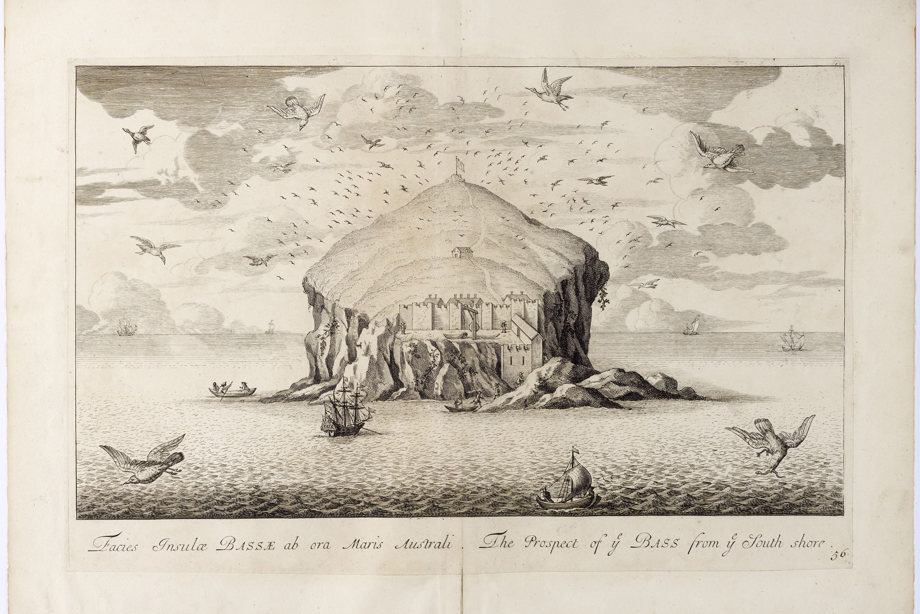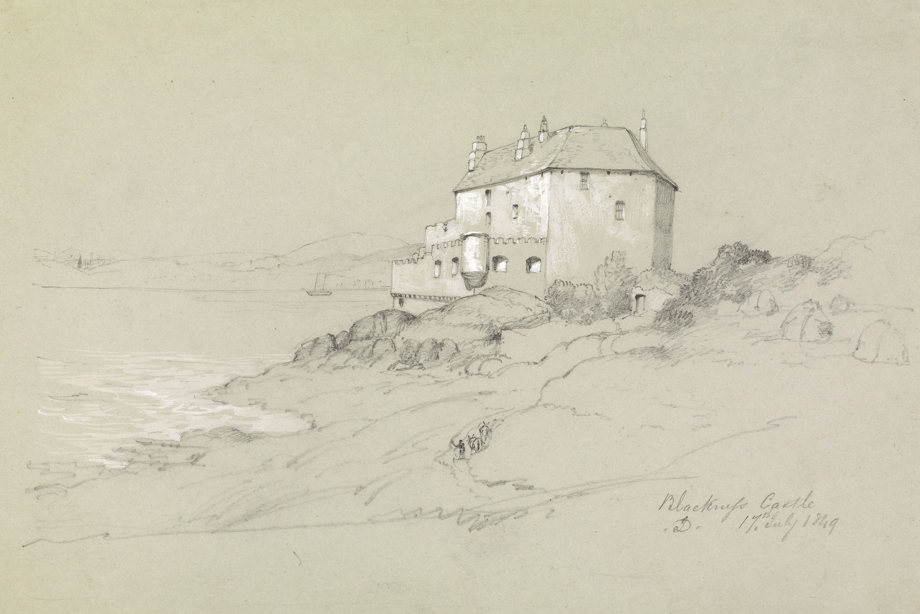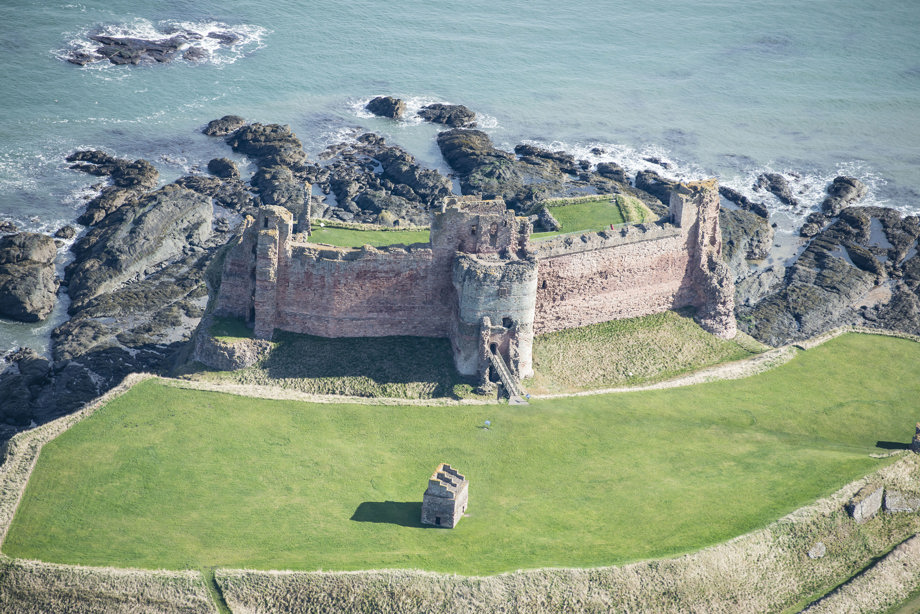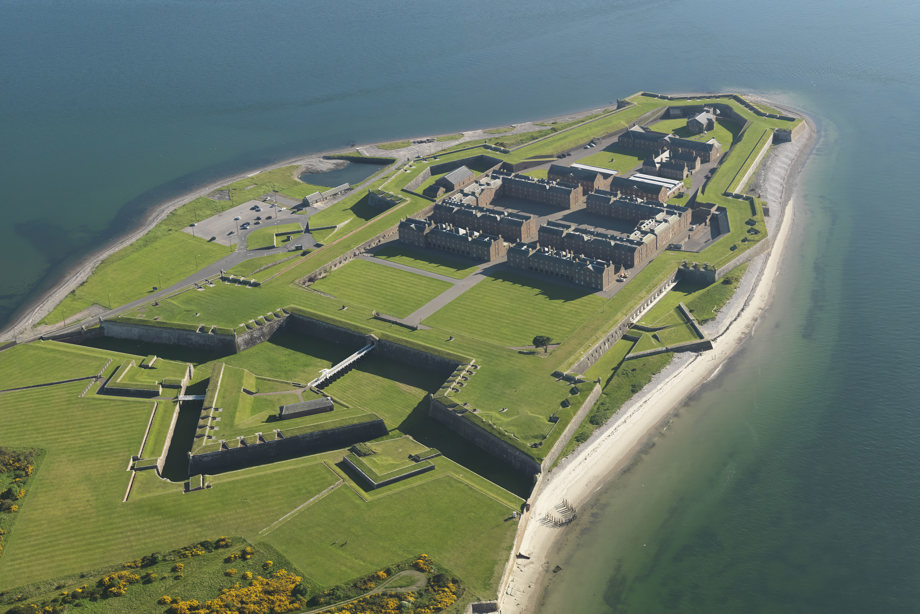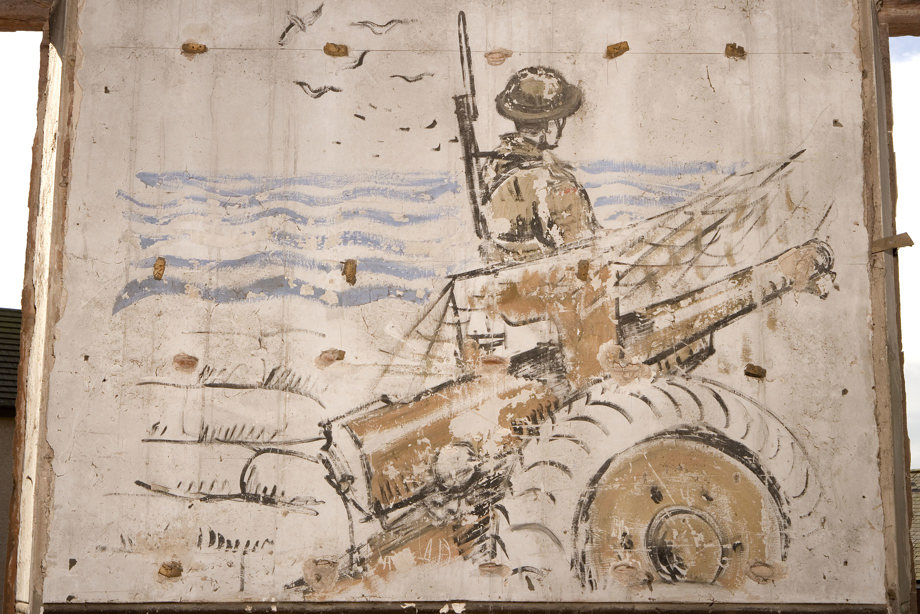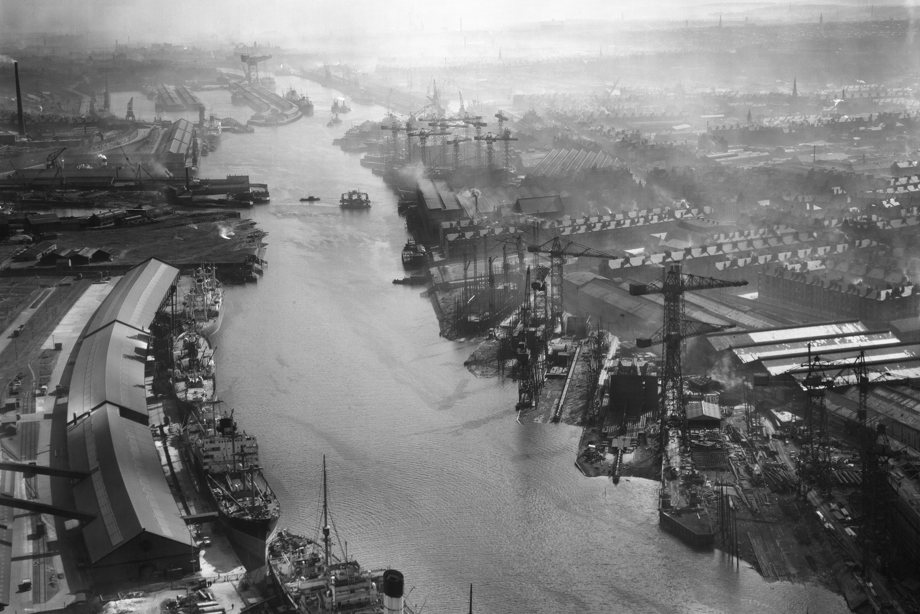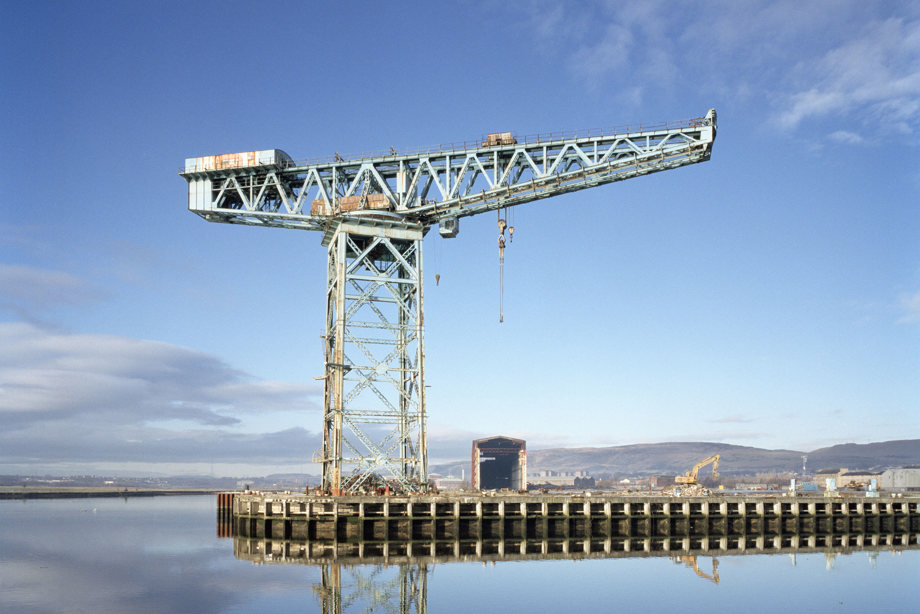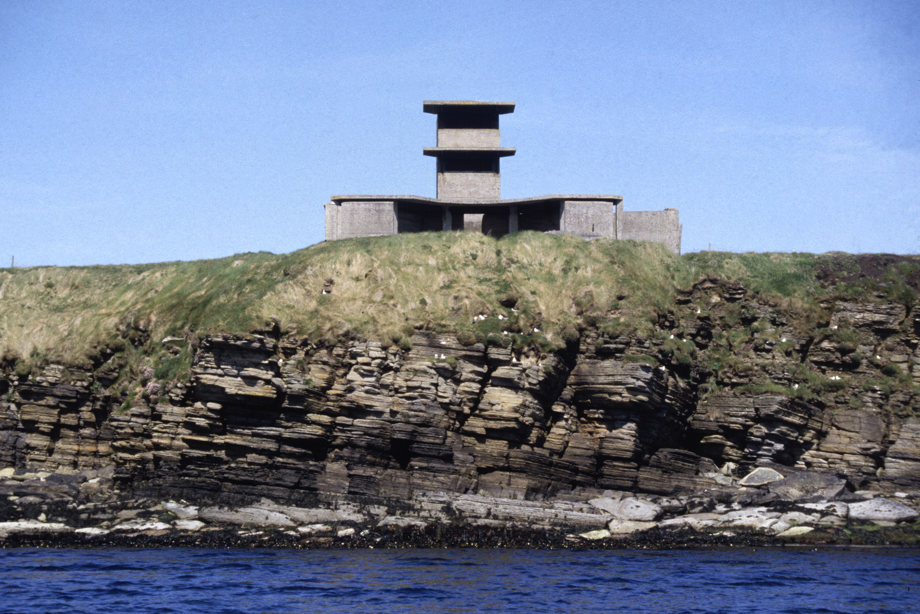From earliest times, settlements were fortified to protect against pirates, raiders or full-scale military invasion. Defending the coast has been an on-going concern. At first, castles were built to keep a watchful eye on local sea lanes; centuries later, concrete ‘dragons’ teeth’ blocks were laid along the coast to deter tanks during the Second World War. Except for the Vikings, the defence of Scotland against invasion from the sea has been mostly successful.
Sea-borne attacks have sometimes come from distant lands; by the late 18th century, the main threat to the Forth Estuary was from the Americans during the War of Independence. The defence of Britain during wartime in the 20th century was made possible through the warships constructed in Glasgow’s Clydeside shipyards. To this day, evidence remains along the Clyde of the structures built to defend this vital contributor to our country’s defences.
Bass Rock, East Lothian, 1718
The Bass Rock is the ultimate defendable site. It made a perfect home for St Baldred, a Christian hermit who died here in 606. Less peacefully, in 1651, a medieval castle built here became a Crown prison.
This backfired during the Jacobite uprisings when four prisoners overpowered their guards and held the fortress in the name of the deposed King James II for three years. Artist and Jacobite John Slezer pictured the Bass Rock during their occupation.
In 1902 a lighthouse was built on the castle’s gun platform. It has been unmanned since 1986, and the rock itself has become a protected haven for seabirds.
Blackness Castle, Linlithgow, 1849
For centuries, Scotland’s trade was mostly carried out by sea, which meant that shipping routes were vulnerable to piracy.
Blackness Castle's position was particularly strategic as it defended the harbour for the royal centre at Linlithgow and protected a key trade route along the Firth of Forth. It was one of four Scottish fortresses that, according to the 1707 Act of Union, could be used as a line of defence against attack by Highlanders.
Blackness was upgraded in the 19th century to serve as the central ammunition depot for Scotland. The roof shown in this view dates from that time and has itself since been replaced.
Tantallon Castle, East Lothian, 2015
Defence against attack from the sea prompted the building of many castles along the coast. The 14th-century builders of Tantallon used its cliff-top location in a particularly spectacular way, running a monumental curtain wall along the landward side to cut off the promontory the castle sits on.
This unique design meant that only one wall had to be manned when the castle was under attack from the land.
During the Civil War, Cromwell’s troops invaded Scotland and besieged Tantallon, bombarding it for twelve days until the royalists defending it surrendered; the castle was never occupied again.
Fort George, Highlands, 2009
Built near Culloden, Fort George was intended to be the ultimate military deterrent against further unrest following the Jacobite uprising of 1745. Architect William Adam designed this magnificent fortress to the latest military standards of the time.
The 1,600 soldiers garrisoned here manned 80 heavy guns covering all directions from around the boundary walls and were provided with a chapel and a brewhouse.
Fort George has been a military base ever since, serving for many years as the depot of the Seaforth Highlanders. It is now the home of the Black Watch, 3rd Battalion The Royal Regiment of Scotland.
Polish soldiers, Arbroath, 1940s
The east coast of Scotland was the likely target for an invasion from German-occupied Norway, which made it a priority for defence measures. Polish troops who had been evacuated to Britain in 1940 were responsible for strengthening existing coastal defences between Arbroath and Burntisland.
In defence plans, the whereabouts of the troops was kept secret as ‘somewhere in Scotland’. This location turned out to be partly in Grant’s Shoe Factory, which had been requisitioned for the purpose.
The soldiers stationed here whiled away the hours by creating murals of cheery Polish townscapes as well as one of a soldier keeping a wary look out across the sea.
River Clyde, City of Glasgow, 1950
Great efforts were made to defend the factories, shipyards, docks and those who worked along the Clyde against attack from the air during the Second World War.
From 1939, heavy and light anti-aircraft batteries, rocket-launching batteries, searchlight stations, decoy sites, mine-watching posts and anti-glider defensive ditch systems were constructed, and barrage balloons were deployed to deter low-flying aircraft.
Fairfield shipyard in the foreground employed as many as 7,000 people at its peak when it built submarines and warships during the First World War. It is now BAE Systems Surface Ships, one of only three shipyards left on the Clyde.
Titan Crane, John Brown & Company shipyard, City of Glasgow, 2003
Many of Glasgow’s shipyards were employed to build navy vessels during both World Wars. This Titan Crane is the oldest survivor of five designed and built in Glasgow by Sir William Arrol & Co. for Clydeside shipyards.
It was the largest in the world when it was constructed in 1907. The crane towers 45 metres above the site of the former John Brown & Company shipyard which built passenger liners and battleships before moving on to merchant shipping after navy orders declined following the Second World War.
Unable to compete with shipbuilders abroad, the yard closed in 1972 but the crane has been preserved and is now a visitor attraction.
Neb Battery, Flotta, Orkney
During the Second World War, the east coast of Britain was vulnerable to invasion, and the north-east of Scotland particularly so given how close it was to German-occupied Norway.
Miles of concrete anti-tank blocks and pillboxes were placed along beaches, and coastal batteries installed in strategic locations. The vital Royal Navy base at Scapa Flow in Orkney was at risk and was heavily defended.
This battery was one of eight designed to protect the southern approach to Scapa Flow from fast-moving motor torpedo boats with a quick-firing twin 6-pounder gun emplacement, searchlights, an observation tower and a shelter.
Scotland's Coast continued
Continue your exploration of Scotland's extraordinary coasts and waters.

